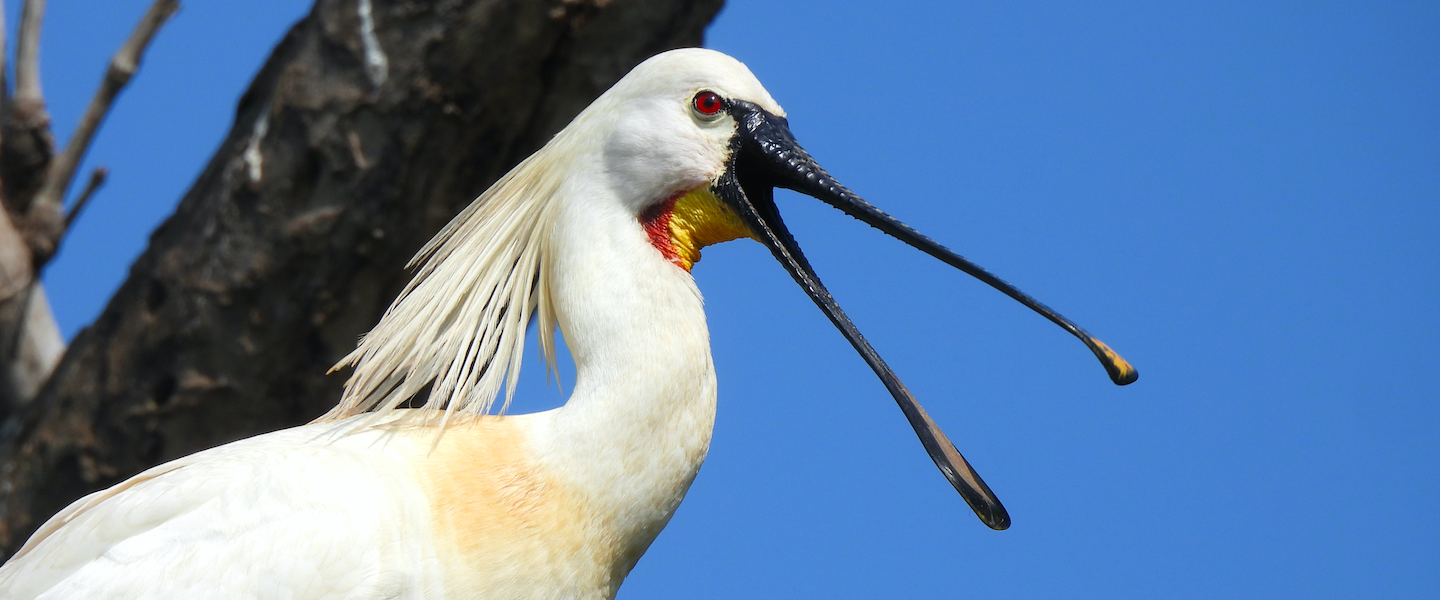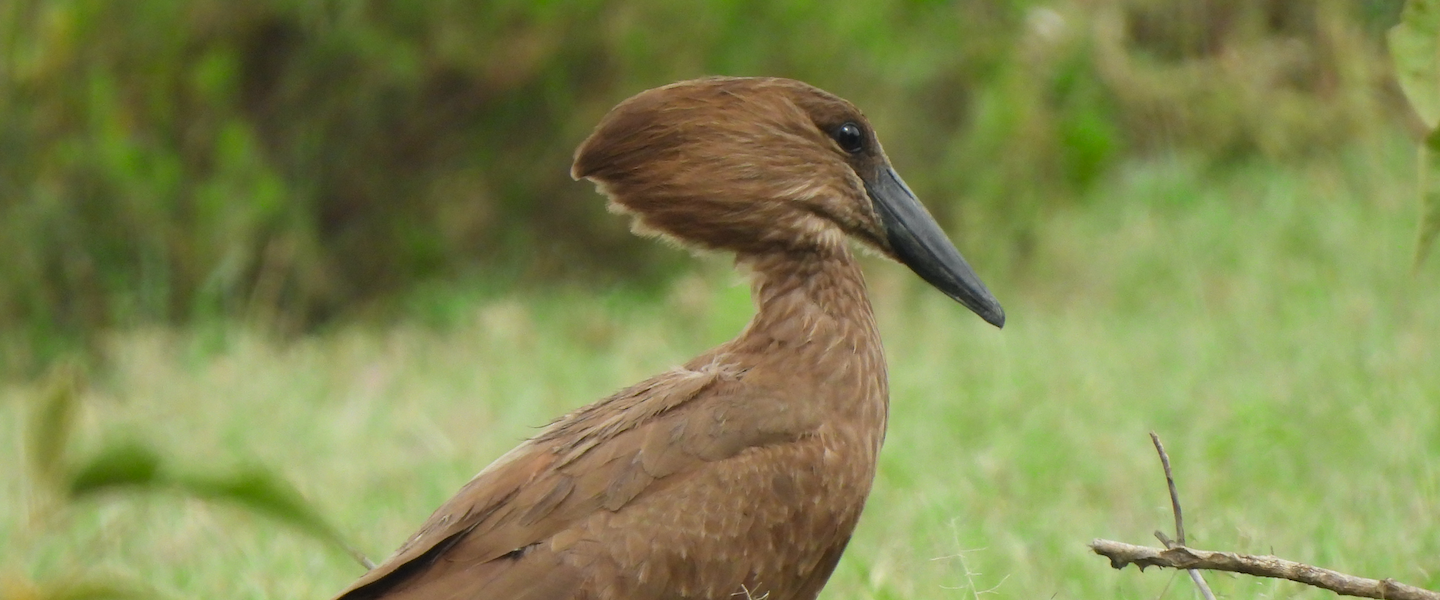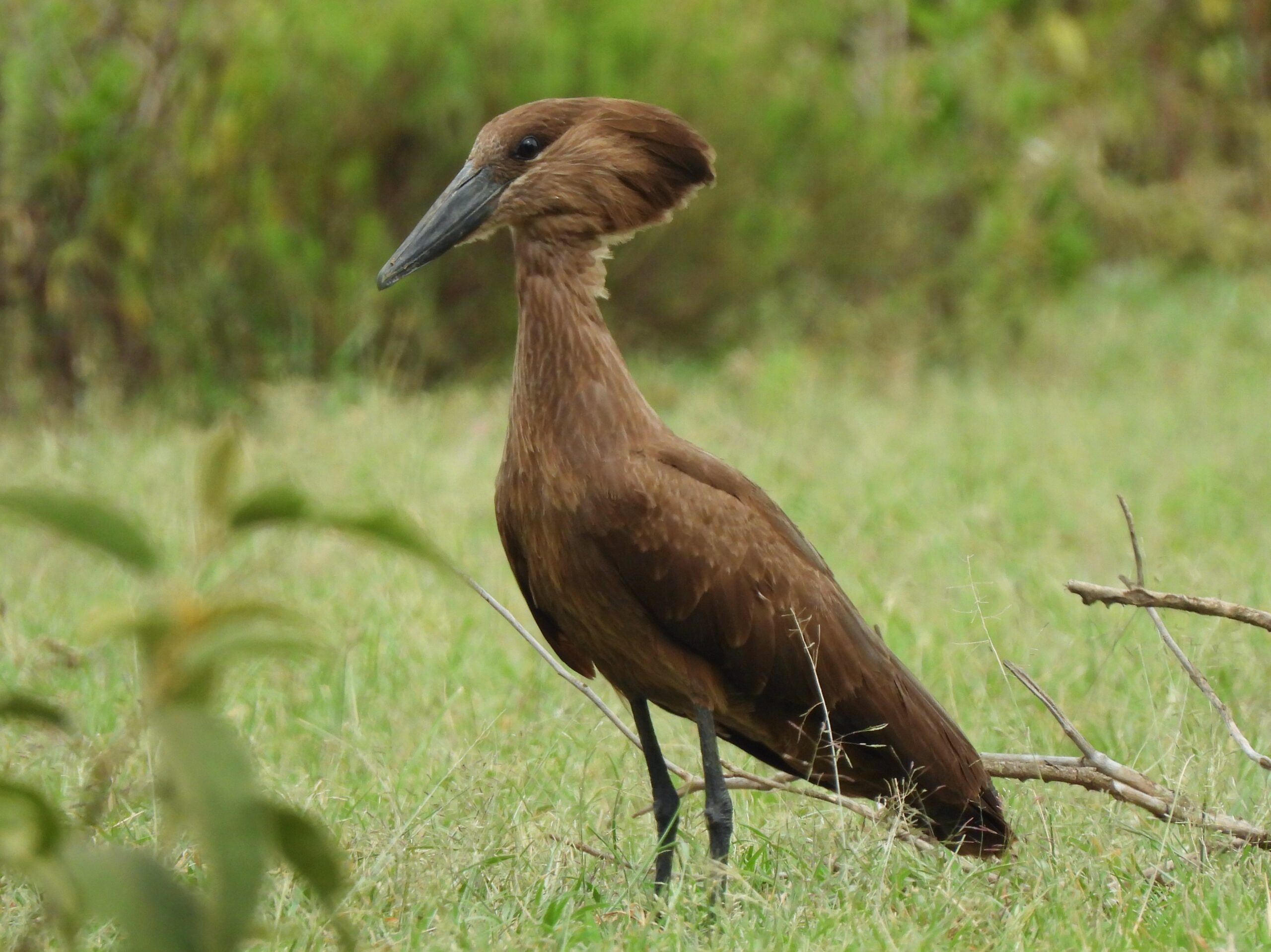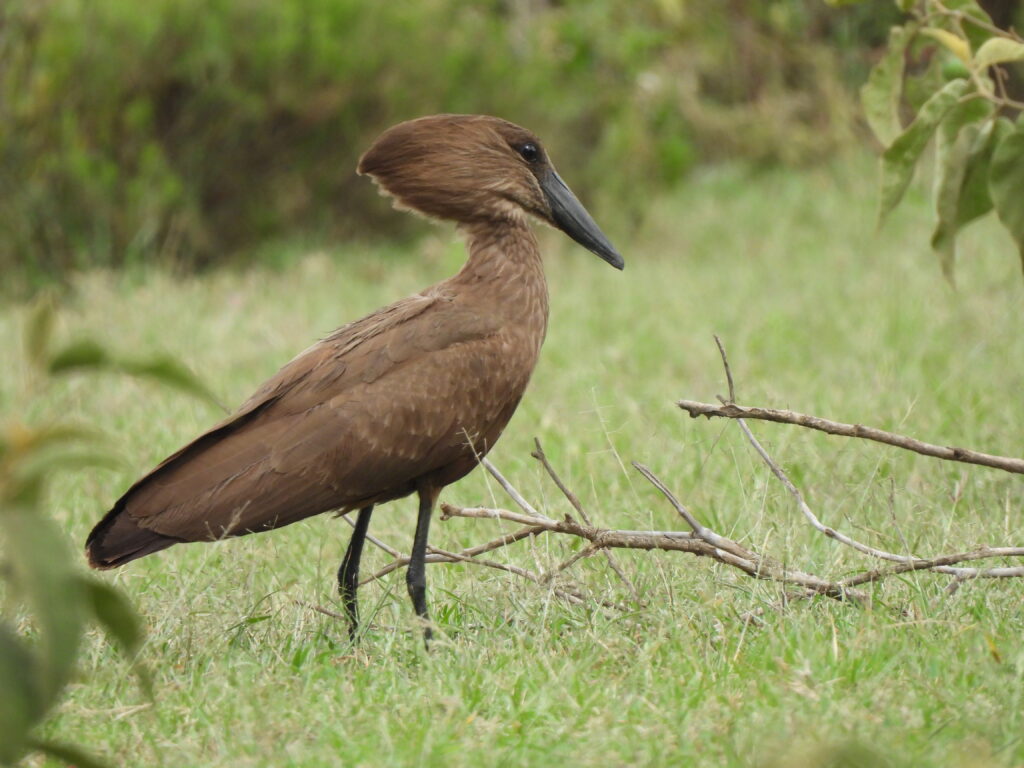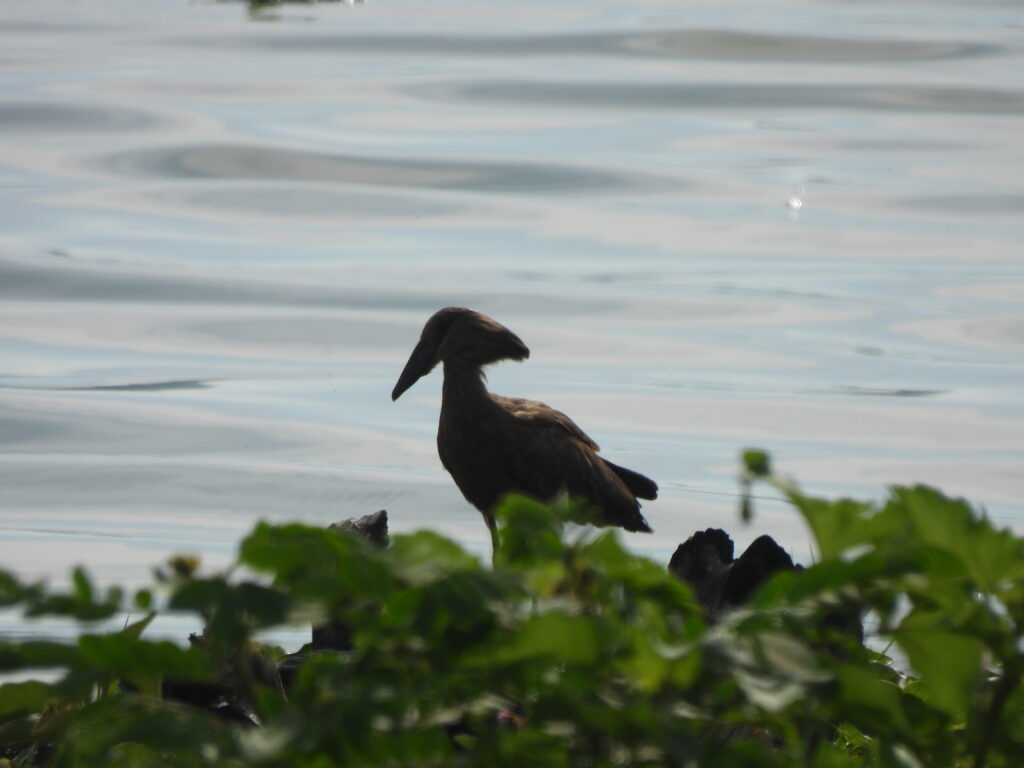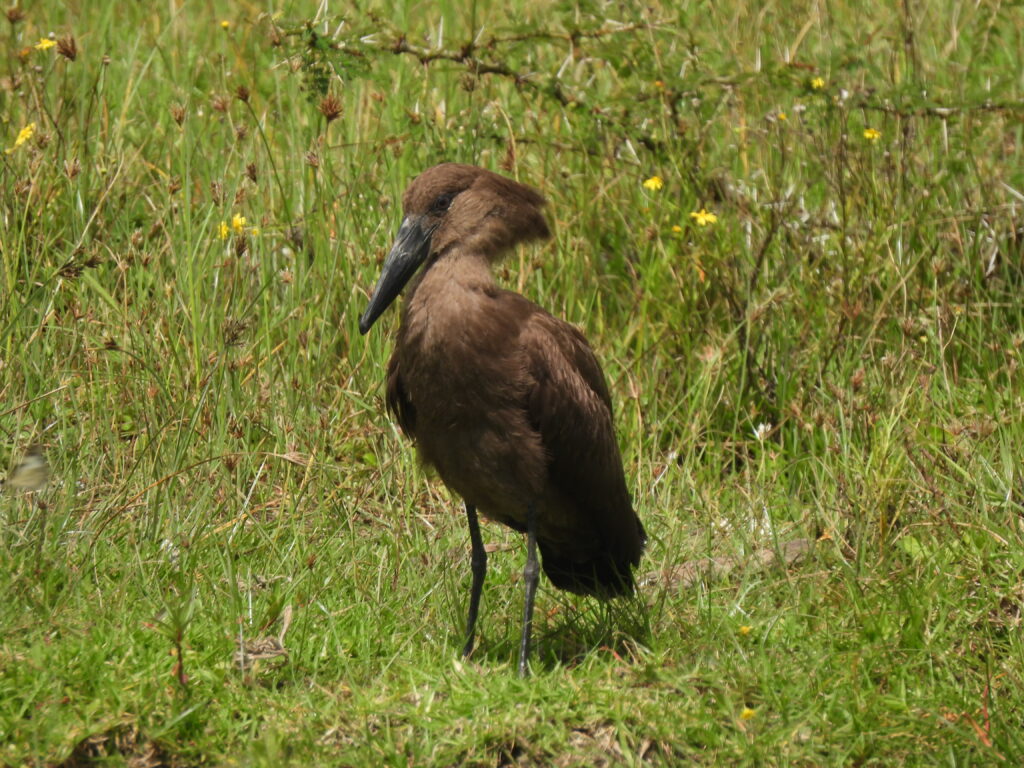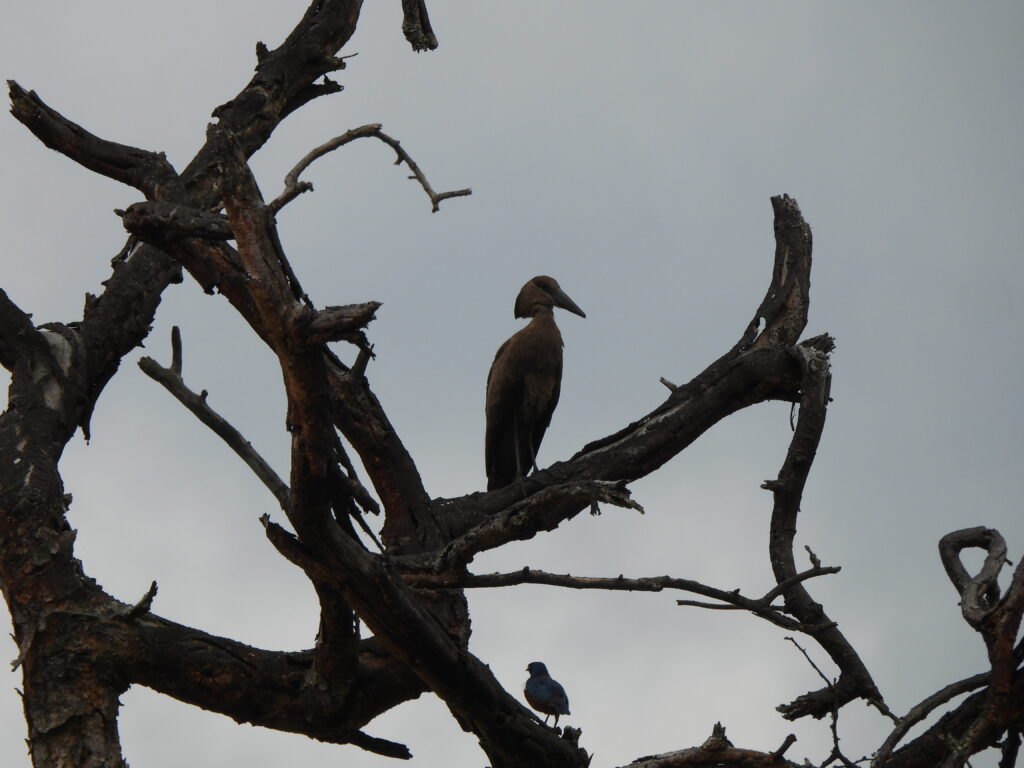The hamerkop (family Scopidae) is a monotypic family of birds belonging to the order Pelecaniformes. This ibis-like bird is mostly found close to the water in most of Subsaharan Africa, including Madagascar and southwestern Arabian Peninsula. Its distinctive looks include a full brown plumage and a very large head with a short crest. It builds one of the largest and heaviest nests of all birds as massive stick-made structures with internal cameras set on large trees. Interestingly, and unlike other large nest-making birds, they build several of these nests each breeding season, regardless of whether they breed or not.
The family comprises 1 species in 1 genus. Genus Scopus inhabits in proximity to rivers, lakes and marshes all across the Afrotropical realm, where it is relatively abundant. This species — and often, its characteristic nest — are part of the folklore of different cultures across its distribution range.
Hamerkop
Scopus umbretta
Inhabitant of wetlands, rivers, rice paddies and other habitats close to water in the Afrotropical realm. Unique, unmistakable bird with a distinctive shape when sitting and flying and a characteristic noisy call. I have seen this species in Madagascar and Kenya.

